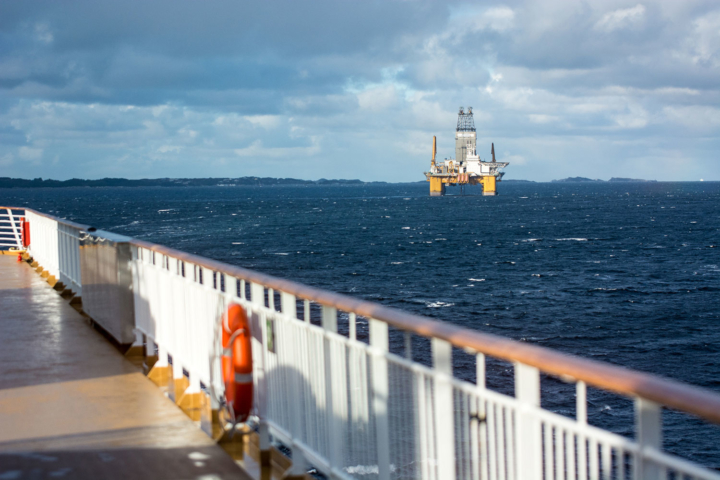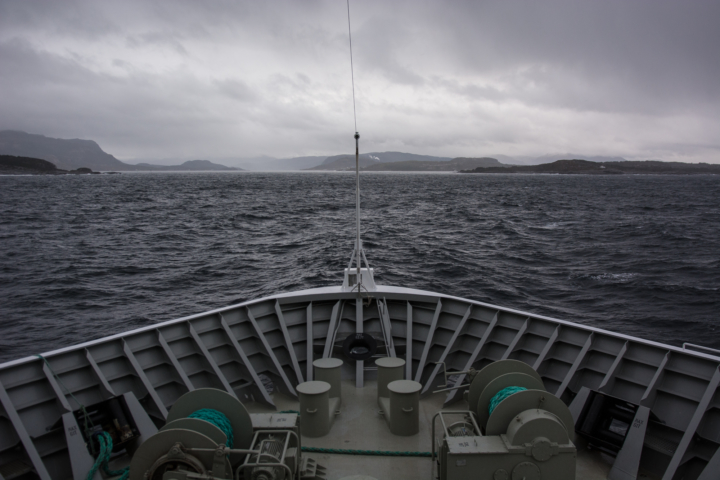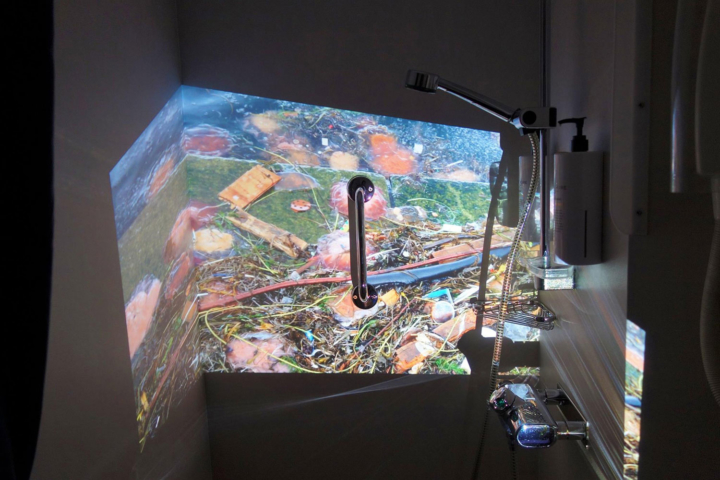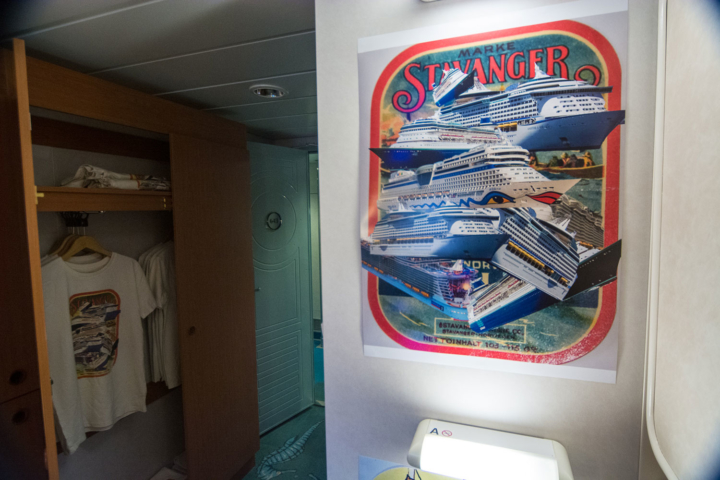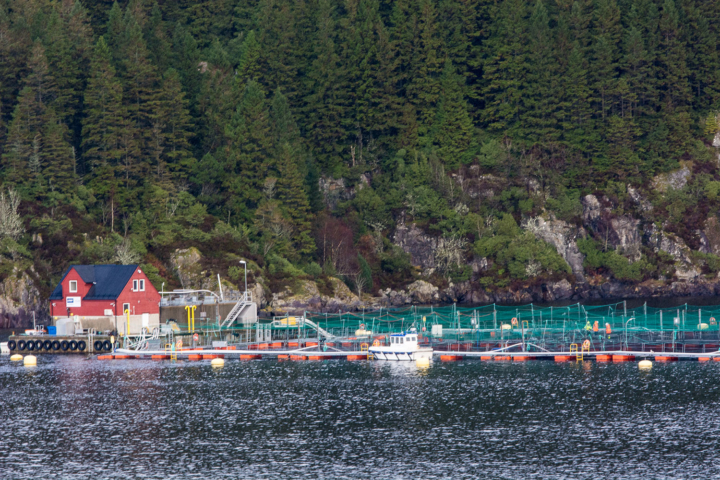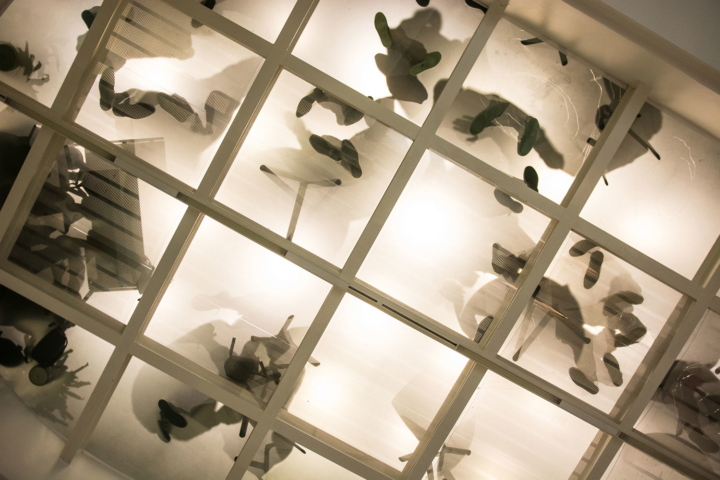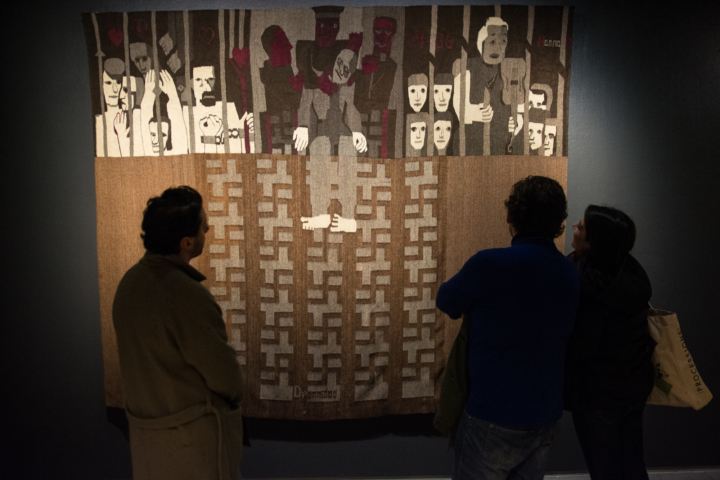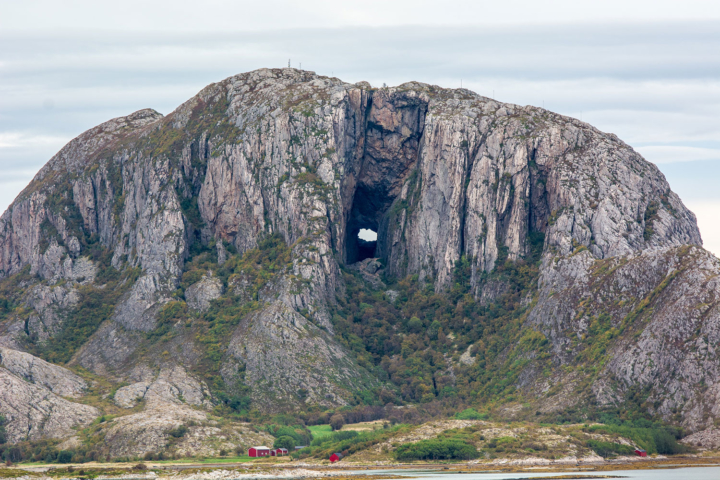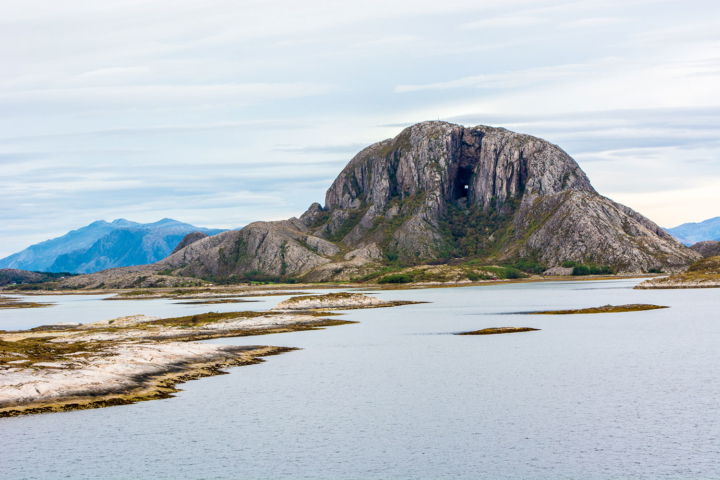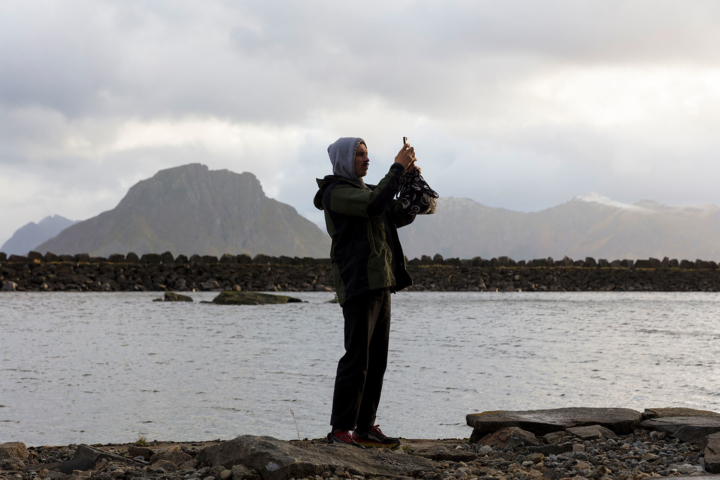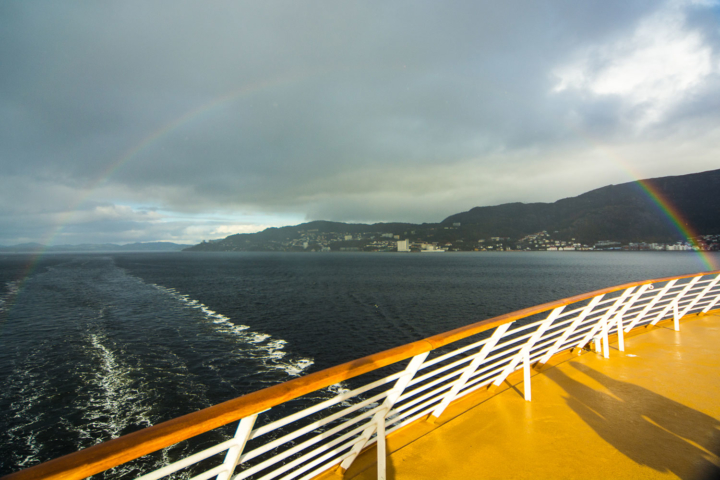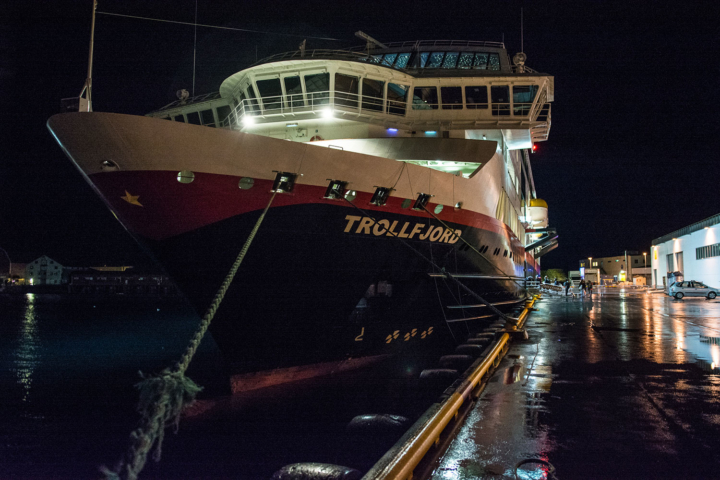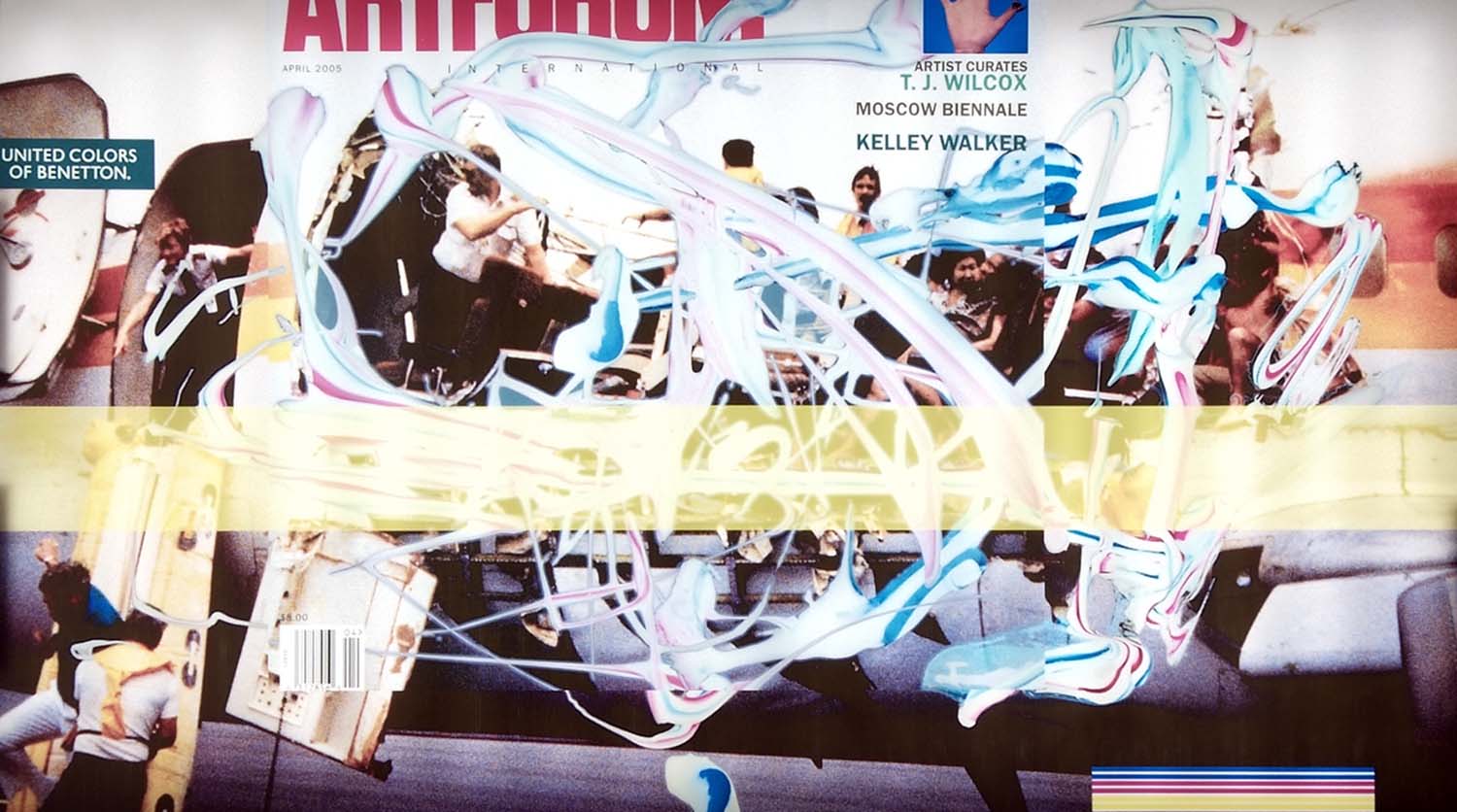For the second year in a row, the Hurtigruten cruise ship line has hosted Coast Contemporary, a four-day symposium and artistic program centered on regional Norwegian artists and art centers. The program takes place during the cruise’s regular trajectory, from Kirkenes to Bergen, along Norway’s coast.
The adventure begins on land, with twenty-four hours in Svolvær. Monica Winther performs Lost in Paradise (all works 2018 unless otherwise noted) — a concert for the “vegetable other,” part of a larger group exhibition called “Why Listen to Plants?” Winding between greenhouses set up inside the North Norwegian Art Centre (NNKS), we are seated on the floor for the concert, where a semicircle of potted plants attends Winther as she vocalizes and plays synths while bathed in neon light.
The following morning, we leave for Kvalnes, an hour’s drive across the narrow landmass of Lofoten. Kjetil Berge’s MidnightSun Barn (2007), a weathered wooden barn — as well as circulating piles of wool blankets, bowls of soup, and a spirited sing-along — provides a welcome respite from the relentless freezing winds and rain outside. Then the adventure really takes off.
Monday, October 22
7:00 p.m.
Boarding commences. Some cabins have a pink-penguin-adorned carpet. Others have a sea-foam-green shell pattern.
11:58 p.m.
We are waiting around for the announcement that the aurora borealis, or northern lights, will be visible tonight. Given that we boarded the boat within arctic-circle territory, we were informed it was a likely prospect.
Tuesday, October 23
1:17 a.m., Fjord Bar, Deck 8
We’re probably not going to see them.
10:00 a.m., Conference Room A, Deck 5
The program begins with a series of introductions by leaders of Norwegian arts institutions: Office for Contemporary Art (OCA), Screen City Biennial, Performance Art Bergen, the Ministry of Foreign Affairs, Norwegian Textile Artists, VISP, and the Sami Centre for Contemporary Art each get a few minutes at the front.
We non-Norwegians are stunned to learn that the city of Karasjok, home to the Sami Centre for Contemporary Art, and Svalbard, where the Global Seed Vault is located, have a total population of 2,200 people — and 3,000 polar bears. The city is built on a previously impenetrable permafrost, one that’s now vulnerable to the effects of climate change.
11:20 a.m., hallway outside Conference Room A, Deck 5
Conversation intensifies regarding last night’s visibility of the aurora borealis.
11:30 a.m., Conference Room A
Marit Paasche gives a compelling overview of the work of Norwegian artist Hannah Ryggen, who was known for crafting highly politicized textiles from yarns dyed with plants local to the fjord near Trondheim, where she lived. The talk is a primer for the permanent installation of her work we will see at the Nordenfjeldske Art Museum in Trondheim the following morning.
1:00 p.m., various nooks around the MS Trollfjord
The Cabin Series is a full program of performances, exhibitions, and talks that take place throughout the rest of the day at an outpost of the Bergen Art Book Fair in the ship’s library. The program is organized by Tanja Sæter, Coast Contemporary founding director, and curator Charles Aubin.
“I’m fascinated by Norway’s passion for its own landscape. Nature is clearly a national ‘myth’ here and therefore, I think, a site of conflicts,” says Charles Aubin. “First, I went back to nineteenth-century romantic depictions of the country and its dramatic coast and was interested in unpacking what these paintings had to say when it comes to nation-building: Who fits within the national narrative and who doesn’t? Who owns this landscape?
Siri Borge presents Resting Cod Face, turning her compact quarters into a gift shop exhibition of sorts. A native of the country’s oil capital of Stavanger, a town that had previously been known for its production of iddis, or sardines (the museums dedicated to each of the city’s achievements make for a wild, if truncated, timeline of the local economy), Borge has updated iconic sardine tin labels to feature, for example, modern cruise ships, the mermaid in the Starbucks logo, and references to paintings by Edvard Munch.
Elsewhere in the cabin, Anne Karin Jortveit begins Index for a place of no importance — a growing installation of wool ropes dyed in a palette of greens, yellows, browns, and blues, all dyed from plants typically weeded out in landscaping. These overlooked or “invasive” species include lush, blooming, golden-yellow clouds of warty cabbage (russekål) and deeply pigmented, seemingly pomegranate-hued beach rose (rynkerose). Postcards of these “threatening” plants are available for sending out, further spreading the reach of these unwanted flowers.
4:00 p.m., Conference Room A
Alon Schwabe and Daniel Fernández Pascual of London-based Cooking Sections give a dynamic performance-presentation of their research on the environmental impact of salmon farming along the coast of the Isle of Skye in Scotland. (Did you know that fish farmers in Scotland dye “natural” Scottish salmon thirteen different shades of Pantone color in order to make them resemble robust fillets?) The artists offer a crowd-pleasing alternative for both the oceans and the palate: oysters. Trays of the spiced bivalves, spritzed by lemon wedges, materialize amid Conference Room A.
8:30 p.m., Saga Fjord Bar, Deck 8
Front row for tonight’s comedy act. Norwegian writer and comedian Are Kalvø gives the lowdown on his friends’ growing fascination with their country’s spectacular natural landscapes. He reads from his latest book, Hyttebok frå Helvete, or, Cabin Book from Hell.
The Norwegians in our group insist that he kills it in his native language.
Wednesday, October 24
8:00 a.m., Docks
We are back on land taking a brief excursion to the city of Trondheim. Our itinerary for the ninety-minute round-trip excursion into Norway’s fourth-largest city includes both the Nordenfjeldske Art Museum and Kunsthall Trondheim. We cannot be late to return — the boat leaves shore again at 10:00 a.m.
9:00 a.m., Kunsthall Trondheim
The Kunsthall’s group exhibition, “Rivers of Emotion, Bodies of Ore,” gives the concept of networking a tactile dimension, one whose roots run deep underground, literally and digitally.
10:30 a.m., Conference Room A
It is surreal to listen to Janike Kampevold Larsen’s Enchantment and exploration. Arctic materialities as the curtains to the conference room are drawn open and ice floes glide by.
8:30 p.m., Conference Room A
After early-bird dinner service, tonight’s screening program: “evolution, meet organism.” Anne Marthe Dyvi and Massimiliano Mollona’s film Oilers (2016) sparks a particularly nuanced conversation on the role of oil profiteering in the Norwegian economy — an economy that artists rely on for art-production subsidies in addition to the remarkably high quality of life the country can afford its citizens. The volatile global demand for oil leads to unsettled conclusions on the resource’s role in the future of Norway.
10:00 p.m., shores of Bergen?
LCLA (architects Luis Callejas and Charlotte Hansson) man the ship’s emergency light communication system for Big Ship, Small Town, a performance in which they temporarily manipulate the interaction between the ship’s intense lights and the shore, drawing attention to the region’s dazzling coastline.
Thursday, October 24
3:34 a.m., cabins
The crew had warned us of high turbulence between 1:00 and 4:00 a.m. This moment was by far the most… dynamic… of our time on the ship.
12:00 p.m., Polar Bar and periphery of outdoor hot tub deck, Deck 9
Bergen’s constant rainfall (one of the rainiest cities in Europe) breaks temporarily, offering a rare double rainbow as the ships approaches the city port.
2:30 p.m.
The MS Trollfjord docks in Bergen. Everyone departs. Walking on solid land gives a slight sense of phantom swaying.

